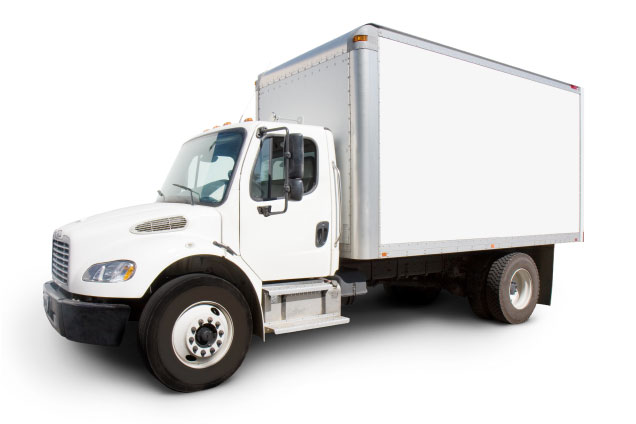Safeguard Your Sofa with Expert Long-Term Storage Advice
Posted on 09/06/2025
Safeguard Your Sofa with Expert Long-Term Storage Advice
When it comes to safeguarding your cherished sofa for the long haul, relying on expert advice is crucial. Whether you're downsizing, renovating, moving abroad, or simply making room for a new piece, storing your sofa for an extended period can be a daunting task. This comprehensive guide provides detailed, step-by-step advice on optimal long-term sofa storage, ensuring your furniture remains in pristine condition until it's ready for use again.

Why Proper Sofa Storage Matters
Many people underestimate the importance of storing sofas correctly. Improper storage techniques can result in damage such as:
- Mold and mildew due to trapped moisture
- Fading or discoloration from sunlight exposure
- Pest infestations that can destroy upholstery
- Structural damage due to improper positioning
- Unpleasant odors
Expert sofa storage advice helps prevent these pitfalls, preserving your couch's appearance, integrity, and value for years to come.
Step 1: Thoroughly Clean Your Sofa
Before placing your beloved sofa in storage, it's essential to clean it meticulously. Any lingering dirt, oils, or crumbs can become breeding grounds for bacteria and pests.
How to Clean Upholstered Sofas
- Vacuum all surfaces: Use the upholstery attachment to remove dust and debris from every nook and cranny, including under the cushions.
- Spot clean stains: Refer to the manufacturer's cleaning instructions or use a gentle fabric cleaner. Pat dry with a clean cloth.
- Let the sofa dry completely: Ensuring no moisture remains will help prevent mold and mildew during storage.
How to Clean Leather Sofas
- Wipe down with a dry microfiber cloth: This removes dirt and dust without scratching the surface.
- Apply a leather cleaner and conditioner: Keep the material supple and protected from cracking.
- Avoid excess moisture: After cleaning, leave the sofa to air out before wrapping it up for storage.
Step 2: Disassemble When Possible
Disassembling your sofa not only makes moving and storing it easier, but also helps minimize possible damage. Carefully remove:
- Legs
- Detachable backrests and arms
- Removable cushions and pillows
Place all screws, bolts, and small hardware in labeled, sealed bags and store them together with the sofa. This little precaution will ease the reassembly process and keep you from losing crucial parts.
Step 3: Wrap and Protect Your Sofa Properly
Why the Right Protection Matters
The best defense against dust, moisture, and pests is a proper sofa covering strategy:
- Use breathable covers: Furniture blankets, cotton sheets, or moving pads are preferable to plastic wrap. Plastic can trap humidity, promoting mold growth and unpleasant odors.
- Wrap each component independently: Especially if you've disassembled your sofa, wrapping each part separately prevents friction damage and makes storage more flexible.
- Secure coverings with tape or stretch wrap: Be sure to avoid direct contact of adhesive with upholstery or leather, as it can leave sticky residue or marks.
For Leather Sofas
- Double-layer protection: Start with a cotton sheet or blanket, then add a second layer with a furniture blanket. This balances breathability and protection from scratches and scuffs.
Step 4: Choose an Appropriate Storage Unit
Selecting the right storage facility is a crucial part of safeguarding your sofa for long-term storage. Factors to consider include:
- Climate control: Always choose a climate-controlled storage unit for long-term storage of sofas. Fluctuations in temperature and humidity can play havoc with wood frames and upholstery.
- Security: Opt for monitored, access-controlled facilities to minimize risk of theft or tampering.
- Cleanliness: Ask facility managers about their pest-control protocols and rely on your own inspection.
- Ventilation: Good air circulation helps prevent musty odors and mildew.
When searching online for "best sofa storage near me," focus on reputable local companies with excellent reviews and clear policies.
Step 5: Transport and Arrange Your Sofa in Storage
Correct handling during transit and arrangement inside your storage unit helps protect your sofa's shape and structure:
- Lifting with care: Always lift from the base to prevent strain on joints. Never drag your sofa--it can rip upholstery and damage legs.
- If possible, store upright: Place your sofa on its feet or base, never on its side or back. This maintains its natural shape and offers better stability.
- Keep items off the sofa: Resist the temptation to stack boxes or other furniture on your couch, as this puts uneven pressure on the frame and cushions.
- Allow airflow around the sofa: Leave a gap from the walls for ventilation and to protect it from accidental knocks during storage.
Additional Tips for Expert-Approved Long-Term Sofa Storage
1. Elevate Your Sofa
Place your sofa on wooden pallets or blocks if possible. This protects the legs from potential flooding or dampness on the floor and promotes air circulation. Expert advice recommends this for all upholstered furniture, especially in areas prone to humidity or weather changes.
2. Periodic Checks and Maintenance
If you have access to your storage unit, perform routine inspections every few months. Look for signs of pests, excessive dust, or moisture:
- Fluff cushions and check underneath for damage.
- Replace coverings if they've become damp or soiled.
- Air out the storage space periodically for freshness.
3. Use Desiccants and Pest Deterrents
- Desiccant packs or silica gel: These absorb excess humidity, protecting your sofa from moisture damage.
- Pest deterrents: Consider natural repellents like cedar blocks or lavender sachets to discourage insects inside storage units.
Common Long-Term Storage Mistakes to Avoid
- Plastic wrapping the sofa tightly: Trapped moisture is the enemy--always use breathable materials to cover your sofa.
- Ignoring cleaning before storage: Storing a dirty sofa invites odors, pests, and stains that set permanently.
- Skipping climate control: Even for short periods, uncontrolled environments can cause warping, cracking, or mildew.
- Stacking items on top: This can lead to sags, cracks, or even irreparable frame damage.
- Forgetting about insurance: Ask your storage provider about insurance plans to protect against unforeseen damage or loss.
Unpacking and Reassembling Your Sofa After Storage
When the time comes to retrieve your sofa from storage, follow these expert steps:
- Carefully remove all wrapping materials and check for any signs of moisture or pest activity.
- Wipe down the frame and upholstery/leather with a dry, clean cloth.
- Let the sofa air out briefly before use to restore freshness.
- Use the stored hardware and instructions to reassemble your sofa securely. Tighten all joints and bolts.
- If desired, vacuum again and refresh with a fabric-safe deodorizer or leather conditioner.

Frequently Asked Questions About Sofa Storage
How long can I store my sofa safely?
If you follow expert sofa storage recommendations, your furniture can be stored safely for years without damage. Climate control, cleanliness, and periodic maintenance are key to preserving your sofa's quality over time.
Will my sofa get ruined in a storage unit?
Not if you follow the right steps! Using climate-controlled units, breathable coverings, and pest deterrents wards off the most common causes of sofa damage in storage. Always inspect your storage unit before committing.
Can I use plastic wrap for long-term sofa storage?
It's best to avoid plastic wrap for long-term storage. Plastic traps moisture, which can cause mildew and odors. Use cotton sheets or moving blankets to allow your sofa to breathe while still protecting it from dust and scratches.
Conclusion: Protect Your Sofa with Proven Storage Expertise
Whether your sofa is a family heirloom, a high-end designer piece, or simply your favorite relaxation spot, it deserves the best care possible during periods of disuse. By following the expert advice on long-term sofa storage outlined in this guide, you'll defend against common risks and ensure that your couch stays clean, comfortable, and beautiful until you're ready to enjoy it again.
- Clean and dry your sofa thoroughly before storage
- Disassemble and wrap components using breathable materials
- Choose a climate-controlled, secure storage facility
- Arrange your sofa in the unit to protect its structure
- Check periodically and use moisture and pest deterrents
By taking these expert long-term storage steps, you'll not only safeguard your sofa's long-term value but also enjoy peace of mind--knowing your treasured furniture investment is protected from harm.
For further professional guidance or to select trusted storage services, search for "long-term sofa storage specialists near me" or consult your local furniture care experts.





